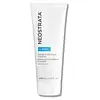What's inside
What's inside
 Key Ingredients
Key Ingredients

 Benefits
Benefits

 Concerns
Concerns

 Ingredients Side-by-side
Ingredients Side-by-side

Water
Skin ConditioningAmmonium Lauryl Sulfate
CleansingAcrylates Copolymer
Cellulose Acetate
Disodium Cocoamphodiacetate
CleansingMandelic Acid
AntimicrobialPropylene Glycol
HumectantGlycerin
HumectantVitis Vinifera Fruit Extract
Skin ConditioningActinidia Chinensis Fruit Extract
EmollientHoney Extract
HumectantCamellia Sinensis Leaf Extract
AntimicrobialSodium Hydroxide
BufferingPhenoxyethanol
PreservativeEthylhexylglycerin
Skin ConditioningWater, Ammonium Lauryl Sulfate, Acrylates Copolymer, Cellulose Acetate, Disodium Cocoamphodiacetate, Mandelic Acid, Propylene Glycol, Glycerin, Vitis Vinifera Fruit Extract, Actinidia Chinensis Fruit Extract, Honey Extract, Camellia Sinensis Leaf Extract, Sodium Hydroxide, Phenoxyethanol, Ethylhexylglycerin
Water
Skin ConditioningPEG-80 Sorbitan Laurate
Glycerin
HumectantGluconolactone
Skin ConditioningAmmonium Laureth Sulfate
CleansingTriethanolamine
BufferingDisodium Cocoamphodiacetate
CleansingMandelic Acid
AntimicrobialSalicylic Acid
MaskingPanthenol
Skin ConditioningMelaleuca Alternifolia Leaf Oil
AntioxidantPEG-150 Distearate
EmulsifyingCocamidopropyl Betaine
CleansingPEG-40 Hydrogenated Castor Oil
EmulsifyingSodium Laureth Sulfate
CleansingSodium Laureth-13 Carboxylate
CleansingSodium Chloride
MaskingPEG-150 Pentaerythrityl Tetrastearate
EmulsifyingPPG-2 Hydroxyethyl Cocamide
EmulsifyingPolyquaternium-10
Polysorbate 20
EmulsifyingBenzalkonium Chloride
AntimicrobialBHT
AntioxidantChlorphenesin
AntimicrobialPhenoxyethanol
PreservativeWater, PEG-80 Sorbitan Laurate, Glycerin, Gluconolactone, Ammonium Laureth Sulfate, Triethanolamine, Disodium Cocoamphodiacetate, Mandelic Acid, Salicylic Acid, Panthenol, Melaleuca Alternifolia Leaf Oil, PEG-150 Distearate, Cocamidopropyl Betaine, PEG-40 Hydrogenated Castor Oil, Sodium Laureth Sulfate, Sodium Laureth-13 Carboxylate, Sodium Chloride, PEG-150 Pentaerythrityl Tetrastearate, PPG-2 Hydroxyethyl Cocamide, Polyquaternium-10, Polysorbate 20, Benzalkonium Chloride, BHT, Chlorphenesin, Phenoxyethanol
Ingredients Explained
These ingredients are found in both products.
Ingredients higher up in an ingredient list are typically present in a larger amount.
Disodium Cocoamphodiacetate is a surfactant and helps cleanse skin. It is created from the fatty acids of coconut oil.
Surfactants help rinse oil, dirt, and other pollutants easily from skin. It has a faint fruit-like scent.
Glycerin is already naturally found in your skin. It helps moisturize and protect your skin.
A study from 2016 found glycerin to be more effective as a humectant than AHAs and hyaluronic acid.
As a humectant, it helps the skin stay hydrated by pulling moisture to your skin. The low molecular weight of glycerin allows it to pull moisture into the deeper layers of your skin.
Hydrated skin improves your skin barrier; Your skin barrier helps protect against irritants and bacteria.
Glycerin has also been found to have antimicrobial and antiviral properties. Due to these properties, glycerin is often used in wound and burn treatments.
In cosmetics, glycerin is usually derived from plants such as soybean or palm. However, it can also be sourced from animals, such as tallow or animal fat.
This ingredient is organic, colorless, odorless, and non-toxic.
Glycerin is the name for this ingredient in American English. British English uses Glycerol/Glycerine.
Learn more about GlycerinMandelic Acid is an alpha hydroxy acid (AHA).
Like other AHAs, it helps exfoliate the surface of the skin by breaking down the bonds that hold dead skin cells together. This helps reveal smoother and brighter skin underneath.
Mandelic acid helps with:
Due to it having a larger molecular size than glycolic acid, mandelic acid is able to penetrate the skin more slowly and evenly. This makes it gentler and less irritating, making it a great option for sensitive or beginner skin.
Despite being milder, mandelic acid is still an effective exfoliant that improves skin texture and tone over time.
What makes mandelic acid stand out from other AHAs? It has antibacterial and antioxidant properties.
These traits make it a great option for acne-prone or problem skin by reducing active breakouts and fading post-acne marks. Studies show that mandelic acid (especially when combined with salicylic acid) can significantly reduce pimples and hyperpigmentation while causing fewer side effects than stronger acids.
Mandelic acid is effective in concentrations of 5% and up with an ideal pH range of 3-4 for at-home use.
Like other AHAs, it’s important to wear sunscreen daily to protect your newly exfoliated skin.
However, unlike glycolic acid, mandelic acid is light-sensitive. Be sure your mandelic acid is packaged in opaque containers to ensure it stays stable and effective.
In short, mandelic acid is a gentle yet powerful AHA that exfoliates, brightens, and helps clarify skin while keeping irritation low. Its antibacterial action makes it especially beneficial for those with acne-prone, sensitive, or uneven skin, offering smoother, clearer, and more even-toned results over time.
Read more about some other popular AHA's here:
Learn more about Mandelic AcidPhenoxyethanol is a preservative that has germicide, antimicrobial, and aromatic properties. Studies show that phenoxyethanol can prevent microbial growth. By itself, it has a scent that is similar to that of a rose.
It's often used in formulations along with Caprylyl Glycol to preserve the shelf life of products.
Water. It's the most common cosmetic ingredient of all. You'll usually see it at the top of ingredient lists, meaning that it makes up the largest part of the product.
So why is it so popular? Water most often acts as a solvent - this means that it helps dissolve other ingredients into the formulation.
You'll also recognize water as that liquid we all need to stay alive. If you see this, drink a glass of water. Stay hydrated!
Learn more about Water